The Wheel weaves as the Wheel wills, and in Prime Video’s adaptation of Robert Jordan’s Wheel of Time novels, that wheel imagery weaves strong in season two.
“We try to use a lot of circular motifs, both visually and storytelling wise, where you see something and then you come back around to it at the beginning or end of an episode or season, or even sometimes across two seasons,” series showrunner Rafe Judkins told me in an interview that took place after the writers’ strike officially ended. “That feeling of repetition and the circular nature of time—I think it gives something subconscious to the audience that lets them get some of that Wheel of Time philosophy as they’re watching the show.”
Judkins and I talked about this and several other aspects of season two, including some things that happen in the finale. Read on for our full discussion, which touches on the expansion of Liandrin’s character, how he and his writing team created the story arc for Moiraine and Lan, and how the finale hints at what’s to come for certain characters.
And warning! Some spoilers for the season two finale of The Wheel of Time lie below.
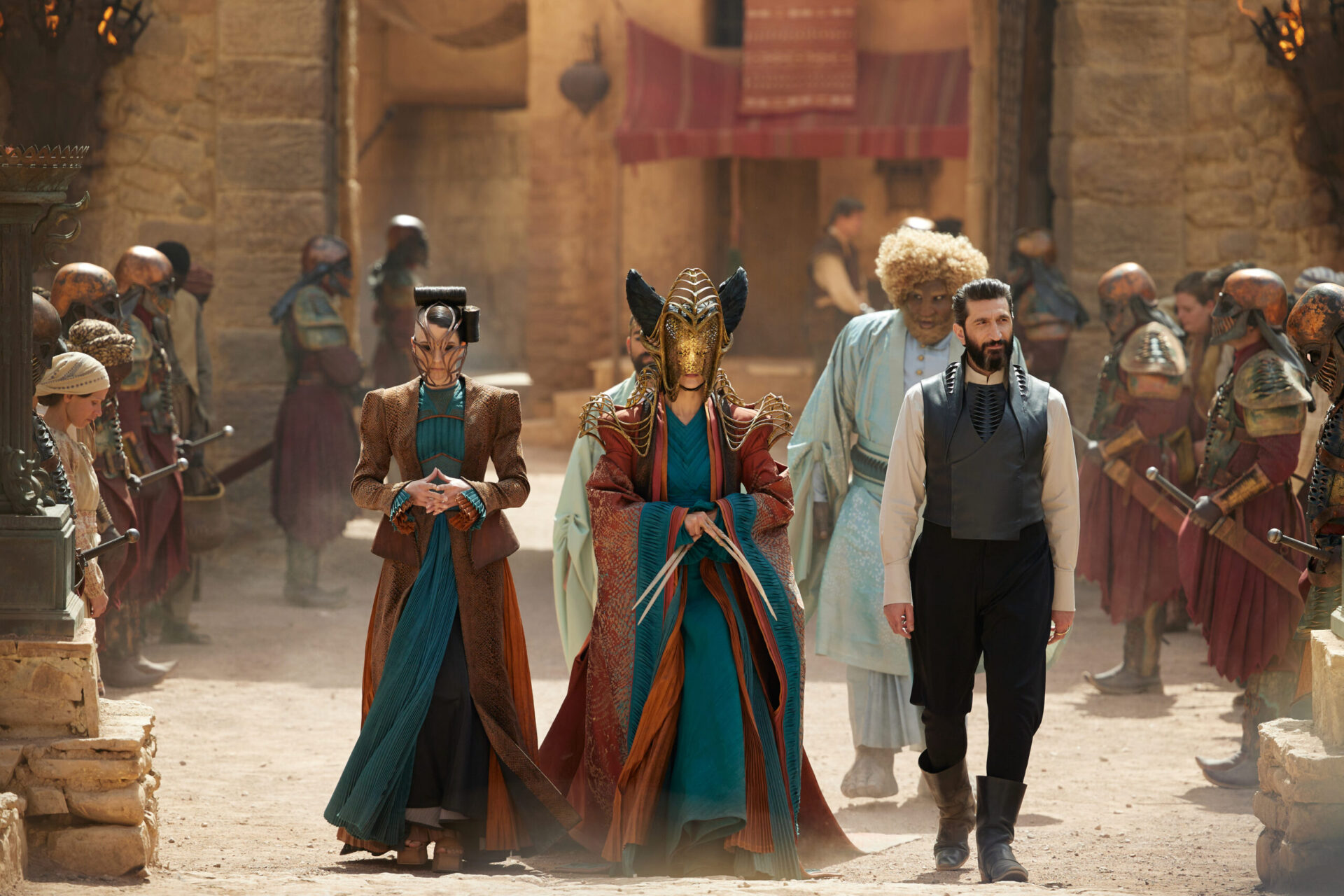
This interview has been lightly edited for clarity and brevity.
I noticed with the finale, that it starts out with Ishamael in the past, but there’s also a circle motif similar to what we saw in the very beginning of the first episode with the Darkfriend social. Was that intentional, to have that circular wheel imagery, so to speak, at the beginning and end of the season?
We try to use a lot of circular motifs, both visually and storytelling-wise, where you see something and then you come back around to it at the beginning or end of an episode or season, or even sometimes across two seasons. That feeling of repetition and the circular nature of time—I think it gives something subconscious to the audience that lets them get some of that Wheel of Time philosophy as they’re watching the show.
Is there any particular use of that during season two that you were especially proud to get into the season?
I like that we had those two scenes at the beginning. It was purposeful to have the cold opens of episode one and episode eight, and also to have the cold open of episode eight of season two be back to the Age of Legends the same way the cold open of episode eight of season one was—these are the two times we see Lews Therin, and we have this circularity continuing to come back to them.
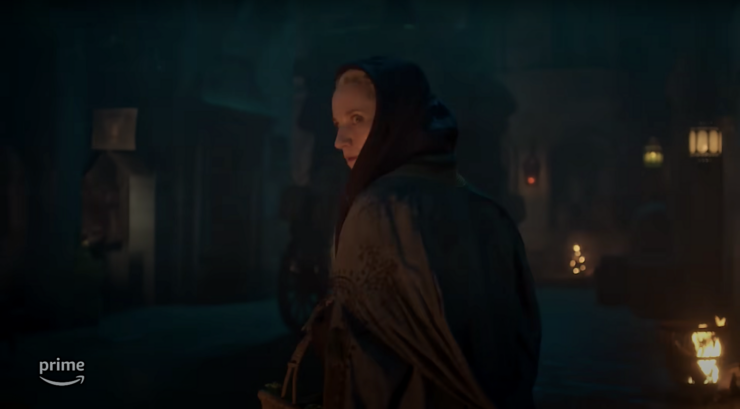
Another character I am excited to talk to you about is Liandrin. I don’t know what it says about me but she’s one of my favorite characters in the season. Her character and what we know about her background has been expanded from the books. When you were creating season two, what was behind the decision to give her more of that depth in her background, including specifically the decision to give her a son?
There were a couple of things at play in expanding Liandrin’s character. First and foremost, she just has a lot of action in the books and when that comes to screen, she does a lot of the bad guy things that get done across these next few seasons. So really understanding who she is and why she’s doing the things she does was really important to us. We’re also building towards where, in the books, there’s a big confrontation between Nynaeve and Liandrin, in terms of Nynaeve spending an entire two books hunting for Liandrin and trying to find her. So we wanted to give emotional underpinning to that as well—what is the relationship between these two women before Nynaeve is sent to hunt her? I see her as a mentor figure for Nynaeve within the Tower where we can learn a little bit about what she’s learning too.
And then the final piece we expanded with Liandrin was seeing her son. We tried a couple different times this season to give very clear visual storytelling to the idea that Aes Sedai age more slowly than other people, both with Liandrin and her son and Moiraine and her little sister. I think it’s really important when you’re adapting something like that—that’s something that you can say, but unless you see it and experience it emotionally through characters that are dealing with something because of this aging, that piece of mythology won’t really sink into the audience’s mind until they get a story about that. And it also simultaneously gives us more context on Liandrin and who she is and why she does what she does.
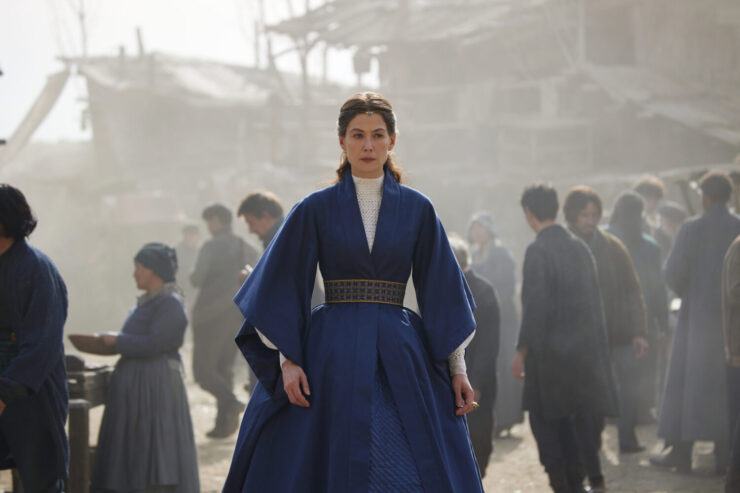
Another thing that we have in season two that’s new from the books, is Moiraine being stilled. What was the thought around having her go through that and also, how did you come up with the mechanism to do so?
In the books, Moiraine and Lan disappear for book two almost entirely. They have one chapter where they’re at Tifan’s Well with two retired Aes Sedai who are working on their history of the world since the breaking, and they’re struggling, with Moiraine trying to drive Lan away and him saying he’s not going to leave her, and they have a really big fight in that scene.
We tried to take all the seeds that were planted in that chapter in book two and figure out ways to expand them out to make a season two story, because you have Rosamund Pike and Daniel Henney, and you can’t really just drop them for a season, after the first season.
We really tried to look at what’s there in the books and take that and then expand outwards. And Moiraine is really feeling a sense of powerlessness in the face of what she’s up against. She’s feeling unprepared to take on the Dark One, unprepared for the Last Battle, she feels that she doesn’t have all the knowledge that she needs in that chapter in the book. And so what we really tried to do in season two was take that and make it even bigger in the show, to really understand that Moiraine is stripped of everything that we identify as who she is. She’s stripped out of being an Aes Sedai. She’s stripped of her power. She’s stripped of her relationship with Lan, her Warder. You really take the character down to bare bones, see what really exists there at the core, and then start to build her back up. And we’re lucky that we have an actress like Rosamund Pike, who can give you all those levels. And so when you see her restored to herself at the end of the season, you actually look at that character and understand her in a much deeper way than you did in season one.
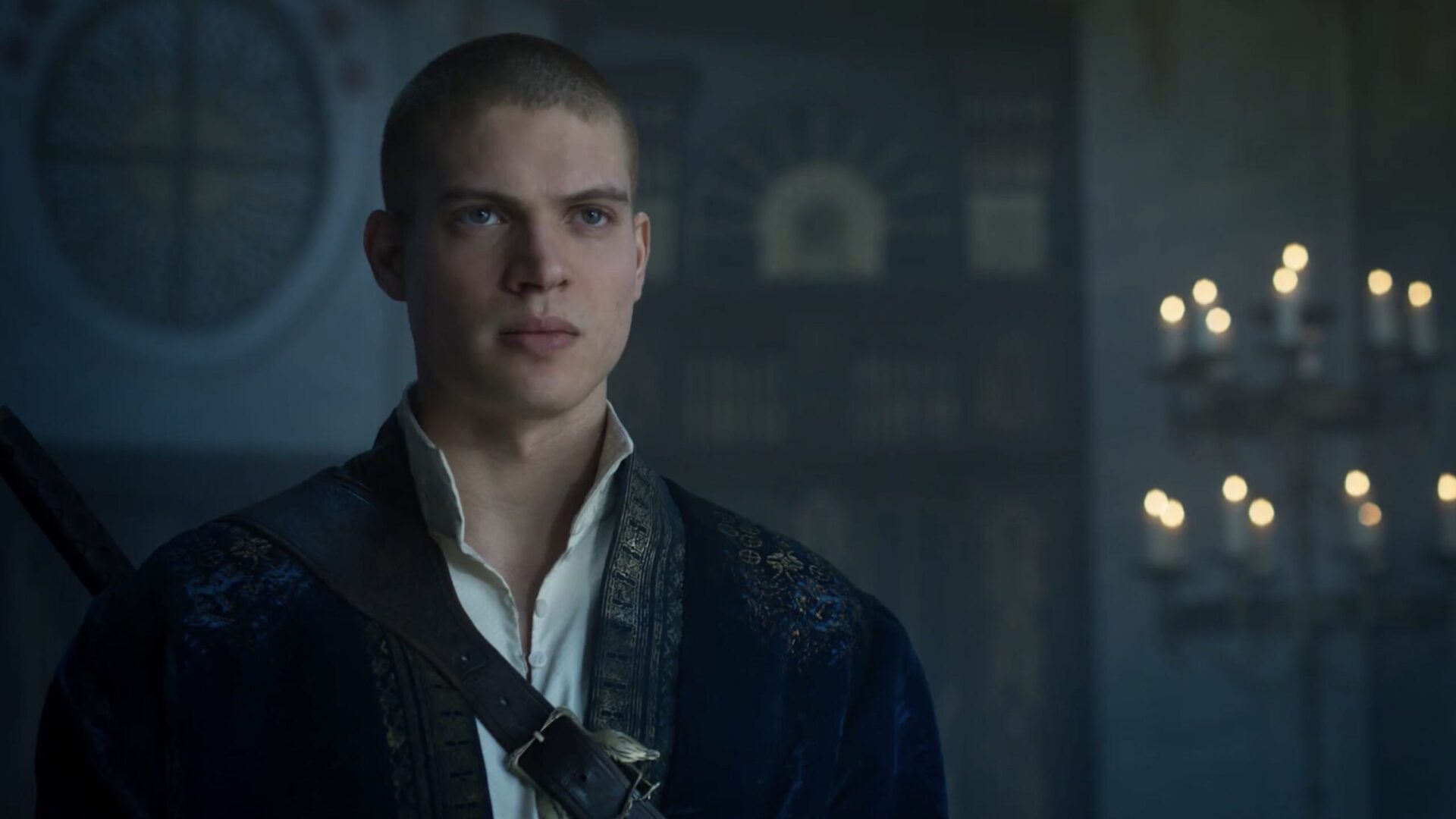
In the finale, we see Rand use his powers with intent and with deadliness. I’m thinking of the scene where he goes to rescue Egwene and faces the Seanchan leader. It’s very ominous because he uses the One Power to kill them all except one. I would love to hear the thought behind creating that scene, because it is so ominous and impactful. And I also realized, a bit after watching, that it reminds me of the Indiana Jones scene where Indy is facing off a guy with a sword and he just shoots him. Was that in your head as well when you were creating that scene?
One of the most iconic scenes in book two is the face-off between Rand and Turak. But we haven’t done the storyline of Rand doing the sword forms with Lan… yet. It’s a story that’s coming. And so, in order to deliver on that scene, what we tried to do was find another scene to pair it up with and there’s this really great scene in book three.
Season two is a lot of books two and three combined. You have the iconic fight between Rand and Turak in book two and then—there’s not very many scenes of Rand in book three, but in one of them, he kills all these bandits, and they all bow to him at the end of the scene. And it’s quite disturbing in the books, and it’s quite unsettling. And so finding a way to put those two scenes together was what we intended at the beginning of the scene. It gives this dual life to Rand—we really need the audience to see the amount of power he has, even when he doesn’t really know how to use it, so that you can start to fear him as much as admire him.
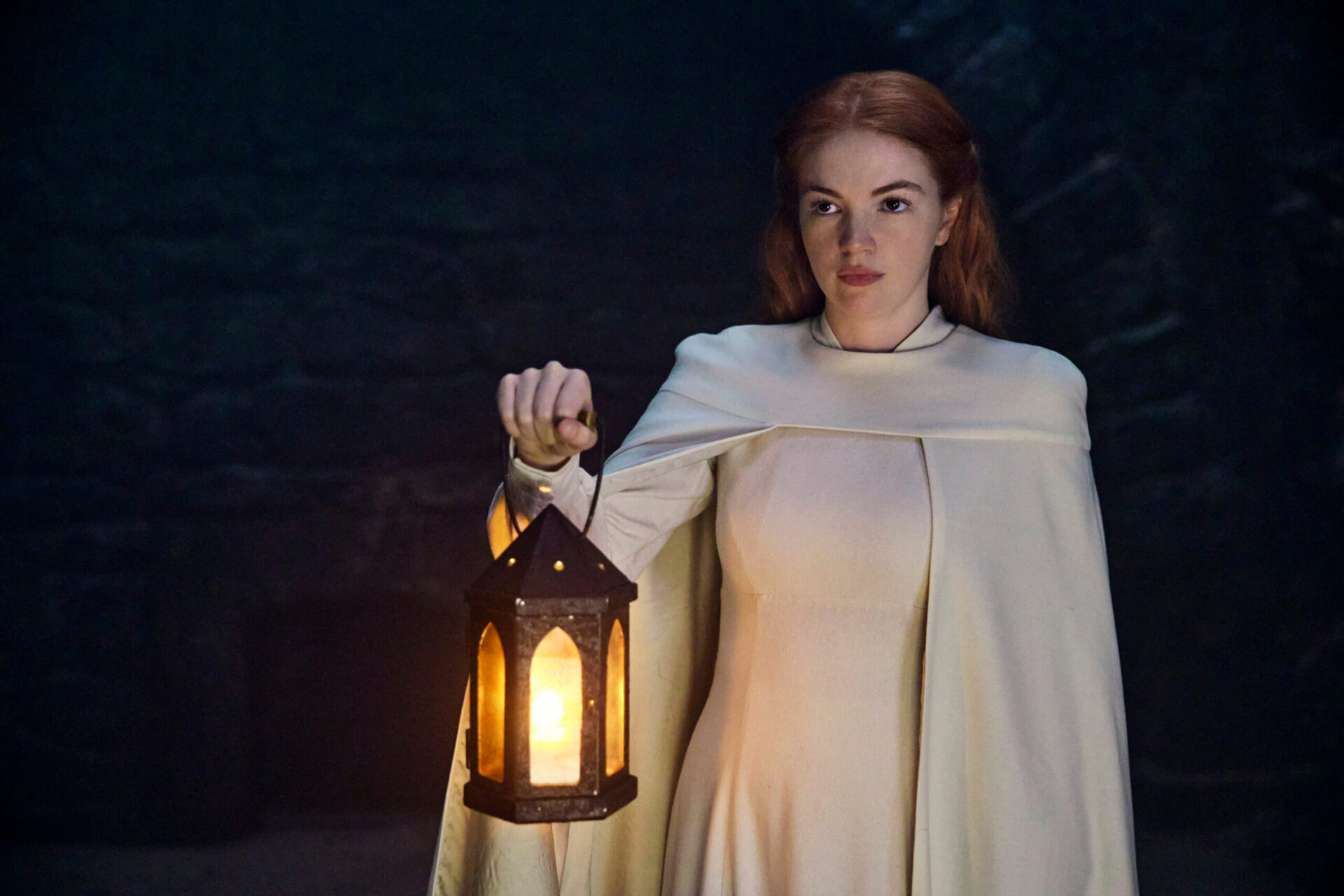
In season two, Elayne and Rand aren’t together until a little moment at the end of the finale. And just knowing what happens in the books, what was the thought of putting that little hint of what’s to come with those characters in there?
It was something that was really important to us to just connect those two characters. They obviously have a huge arc in the books coming in front of them, and so to give them a moment that really signals to the audience who doesn’t know the books: “Hey, watch the relationship between these two because there’s something going on here.” I think that we succeeded in that and we also did a little hint to their meeting in the first book because Elayne is actually helping Rand after he hurts himself in their very first meeting in The Eye of the World. And so having her help him after he’s been hurt in their first meeting here, we thought it was like a nice touchstone for that.
Seasons one and two of The Wheel of Time are now available on Prime Video. Season three of the show is currently in production, though there’s no news when it will make its way to the streaming platform.










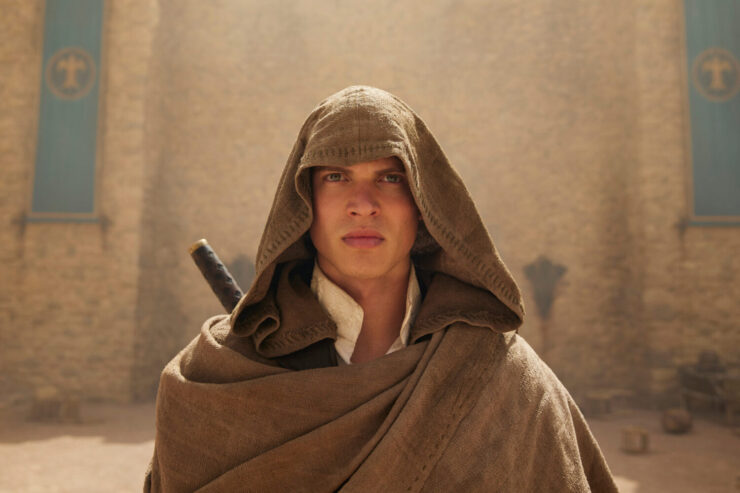
Well, that’s interesting. I enjoyed season 2 more than season 1, but it’s pretty clear that there are some critical elements of this story that the showrunner doesn’t really get. Which isn’t the end of the world, but it does explain a lot. This is a really difficult series to adapt to the screen. I will be here for season 3, though, so I guess mission accomplished. From a certain point of view.